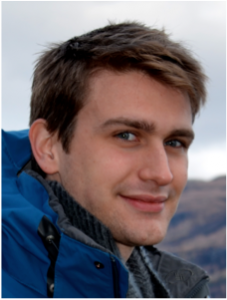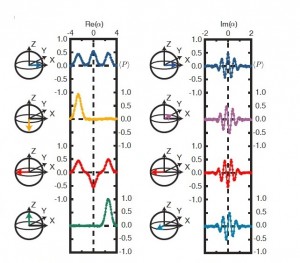Quantum computing is a dynamic field that combines theoretical and experimental physics to develop novel methods of transporting information. In the past decade, efforts to develop a working quantum computer have garnered attention from government leaders and research scientists alike. With ultra-fast computation, quantum computers promise the ability to create complex simulations and privacy systems outside our current reach. Physicists at Yale University led by Sterling Professor of Applied Physics and Physics Robert Schoelkopf recently achieved a breakthrough in quantum computer development. They have devised a method to harness and manipulate 100 light photons into a superposition of states known as “Schrödinger cat states.” These cat states could serve as quantum bits, or qubits, the basic unit of quantum information storage.
In classical computing, data is stored in strings of binary units (bits), where information is encoded in series of zeroes and ones. While classical bits can only have these two discrete values, qubits can have values of zero, one, or a superposition of zero and one.

However, harnessing these quantum effects faces a difficult problem: error correction. In classical computing, error correction is simple — one can run measurements, isolate the errors, and fix them. But Michel Devoret, Frederick William Beinecke Professor of Applied Physics and Physics and a major contributor to the project, explained that quantum systems are different. “If you make a measurement, you perturb the system, so people initially thought that quantum error correction would be impossible,” says Devoret.
Over the past decade, quantum error correction has been shown to be possible but difficult. “Most of the research is now aimed at solving the problem of quantum error correction with minimum hardware,” said Devoret, characterizing the endeavor as “the next holy grail of quantum computing research.”
Information in the quantum world exists in a specially designed quantum state, or cat state. This condition is named after Schrödinger’s classic thought experiment, in which a cat inside a sealed box can be simultaneously dead and alive. Its condition, in other words, is a superposition of the two states. Opening the box to check on the cat destroys the superposition because the viewer learns that the cat is either dead or alive; it can no longer exist in both states. Similarly, directly measuring the state of a qubit will “open the box,” undercutting the qubit’s ability to be two values at once.

The new advances in controlling photons suggest a poweraful method to circumvent many of the difficulties in quantum error correction. These photons are contained in a resonant cavity dubbed a “photon box.” By measuring the parity, the even or odd-numbered count, of photons in the cavity, scientists are able to detect an error — a photon loss — without perturbing the encoded information.
Experimentally, the team employed a combination of microwave engineering techniques to capture microwave photons inside their cavities. The procedure was conducted at cryogenic temperatures around 20 millikelvin to minimize disruption from dissipation and thermal radiation. They created cat states comprising as many as 111 photons and manipulated the cat states to have up to four different states in superposition.
Brian Vlastakis, a Yale graduate student and the lead author of the Science article published from the experiments, adds that, aside from error correction, scientists “can trap many photons all at once in a single cavity, so everything is much simpler on the hardware side.” While current methods of creating qubits from only superconducting junctions offer some benefits, Vlastakis said that “it is much easier to create many photons and control them. This is a possible viable source to create a quantum computer.”
This seminal work in photon manipulation may be key in one day creating manageable quantum computer processors. As Vlastakis put it, “if you built a processor that behaved quantum mechanically, your processor can be many processors simultaneously. This can separate a problem into multiple smaller problems, so you can solve your problem much faster.”
Of course, the science itself is just as charming. Studying quantum computing helps define what exactly “information” is in the physical world and is a prime way to empirically observe non-intuitive quantum-mechanical phenomena. “You get to play with very small, very elementary kinds of systems,” said Vlastakis.
From the intrinsic science behind quantum systems arises yet another perk. “The most wonderful aspect of quantum information,” said Devoret, “is that it can be transferred but cannot be copied.” This advantage would allow for heightened Internet privacy, protecting credit card numbers, medical records, and other confidential information. It would also give people greater control over their information. The autonomy that quantum computing would give its users is what Devoret brands as the “new paradigm of computing.”
